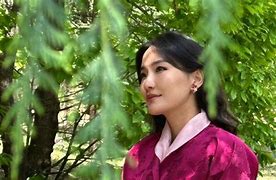
Kublai Khan’s Personal Life
Kublai Khan’s journey to greatness began in his early years. Born in 1215, he was the grandson of the legendary Genghis Khan. Unlike many of his contemporaries who were groomed on the battlefield, Kublai’s upbringing was a blend of martial training and exposure to Chinese culture and administration. This unique education not only made him a formidable warrior but also instilled in him a deep appreciation for the arts and governance.
Kublai Khan’s ascent to power was not without its familial challenges. His rise involved navigating the complex web of Mongol politics and familial loyalties. The death of Möngke Khan, his brother and the Great Khan, in 1259 sparked a succession struggle. Kublai emerged victorious, but this victory came at the cost of fracturing the Mongol Empire, illustrating the delicate balance between family ties and political ambition.
Kublai Khan’s personal life was marked by several marriages, as was customary for Mongol leaders. His chief consort, Chabi, played a significant role not only in his life but also in his reign. Described as intelligent and politically savvy, Chabi influenced many of Kublai Khan’s policies, particularly those regarding the treatment of Chinese subjects. The couple had four children, and through these offspring, Kublai Khan sought to secure his legacy.
Kublai Khan’s Administration and Reforms
As an administrator, Kublai Khan was ahead of his time. He implemented reforms that brought stability and prosperity. His governance style was like that of a modern CEO, combining innovation with effective management to steer a vast empire.
Kublai Khan restructured the government to better manage his expansive empire. He established a centralized bureaucracy, which was a significant departure from the traditional Mongol governance style that relied heavily on tribal loyalties. This shift towards a more systematic bureaucratic system was influenced by Chinese administrative practices, known for their efficiency and order.
Understanding the importance of a stable economy, Kublai Khan implemented fair taxation policies. He streamlined the tax collection process, reducing the burden on the peasantry while ensuring a steady flow of revenue for the empire. These economic reforms were crucial in maintaining the stability and prosperity of the Yuan Dynasty.
Kublai Khan placed a high emphasis on law and order. He created a legal code that was a blend of Mongol and Chinese laws, aiming to establish a system of justice that was fair and applicable to all subjects, regardless of their ethnic background. This legal system helped in unifying the diverse populations under his rule and maintaining social harmony.
Kublai Khan was a great patron of infrastructure development. He invested in building roads, canals, and bridges, which facilitated trade and communication across the empire. These public works not only boosted the economy but also helped in the quick and efficient administration of his vast territories.
Recognizing the importance of trade, Kublai Khan implemented policies that encouraged commerce. He ensured the safety of trade routes, particularly the Silk Road, and established merchant guilds. These efforts not only enriched the empire but also increased cultural interactions with other regions.
Kublai Khan valued education and talent. He established schools and promoted a merit-based system for the selection of government officials. This focus on education and meritocracy helped in creating an efficient and capable administrative body.
Despite his best efforts, Kublai Khan’s administration faced challenges. The size of the empire, coupled with its diverse cultures and languages, posed significant administrative difficulties. Furthermore, maintaining the balance between Mongol and Chinese elements within the bureaucracy was a constant challenge.
Kublai Khan’s administrative reforms had a lasting impact on the governance of China and the Mongol Empire. His innovative approach laid the foundations for future governance models in the region. His era was marked by a level of administrative sophistication and cultural integration that was unprecedented for its time.
Kublai Khan’s Conquests
Under Kublai Khan’s reign, the Mongol Empire reached unprecedented heights. His conquests were not mere displays of power; they were strategic moves that expanded his empire’s reach. Imagine a chess grandmaster, moving across a board that spanned continents. That was Kublai Khan in action. He didn’t just conquer lands; he integrated them into a vast, multicultural empire.
One of Kublai Khan’s most significant conquests was the subjugation of the Song Dynasty in China. This campaign was not just a military victory; it was a cultural and political turning point. By defeating the Song Dynasty, Kublai Khan not only expanded his empire but also laid the foundation for the unification of China under Mongol rule.
Kublai Khan’s gaze also turned towards Southeast Asia. His campaigns in this region, although less successful than in China, demonstrated his desire to create a truly global empire. The efforts to subjugate regions like Burma (Myanmar) and Vietnam, although challenging, were indicative of his relentless ambition.
Kublai Khan’s conquests fundamentally changed the nature of the Mongol Empire. It transitioned from a nomadic empire to a more settled, multicultural state. These conquests brought immense wealth and diverse cultures under the Mongol umbrella, enriching the empire socially and economically.
Kublai Khan and Marco Polo
The story of Kublai Khan and Marco Polo reads like a tale from a storybook. Polo, a Venetian explorer, found himself in the court of the Great Khan. Their interactions weren’t just about East meeting West; they were about the sharing of ideas, the kind of cultural exchange that shapes civilizations.
Marco Polo wasn’t merely a guest in Kublai Khan’s court; he became an envoy and a trusted member of the Khan’s administration. His travels throughout the Mongol Empire, as recounted in his book, “The Travels of Marco Polo,” offer a unique perspective on the size, diversity, and complexity of Kublai Khan’s realm. Polo’s descriptions of the wealth, sophistication, and size of the Khan’s empire captivated the imagination of Europe.
Through Marco Polo’s writings, Kublai Khan is portrayed as a ruler of immense power and wisdom. Polo’s accounts highlight Kublai Khan’s curiosity about foreign cultures, his lavish court, and his interest in governing with justice and efficiency. These descriptions played a crucial role in shaping the European perception of the Mongol Empire as a place of wonder and sophistication.
The legacy of the relationship between Kublai Khan and Marco Polo extends beyond their personal interactions. It represents a key moment in global history where distant cultures came into contact, leading to an exchange that would have lasting effects on both the East and the West.
Kublai Khan’s attempts to invade Japan were ambitious moves that ultimately failed. But these sieges were more than military campaigns; they were moments that shaped the identity of a nation. Japan’s successful defense against the Mongol invasions is a key chapter in its history, a testament to resilience in the face of overwhelming odds.
Kublai Khan’s Capital at Xanadu
Xanadu was not just a capital; it was a symbol of Kublai Khan’s empire. This city was a hub of culture, trade, and diplomacy. Think of it as the Silicon Valley of its day—a place where ideas, people, and goods from all over the known world came together.
Kublai Khan’s Impact on Eurasian History
Kublai Khan’s reign left an indelible mark on Eurasian history. His empire was a bridge between East and West, a catalyst for cultural, technological, and economic exchanges that shaped the world.
Under Kublai Khan, the Mongol Empire reached its greatest extent, encompassing vast regions of Asia and extending its influence to Europe. This expansion played a crucial role in shaping the geopolitical landscape of Eurasia during the 13th century.
Kublai Khan’s empire became a conduit for the exchange of ideas and technology. Inventions and ideas from China, such as paper money, printing technology, and gunpowder, were introduced to the West. Similarly, scientific and philosophical ideas from the Islamic world and Europe found their way to Asia.
The cultural patronage of Kublai Khan and the cosmopolitan nature of his court had a significant impact on literature and the arts in Eurasia. His empire, and its description in various texts like Marco Polo’s travelogues, inspired a wealth of artistic and literary works.
The Establishment of the Yuan Dynasty
When we talk about the Yuan Dynasty, we’re talking about Kublai Khan’s masterpiece. He didn’t just build a dynasty; he melded Mongol and Chinese traditions to create something entirely new. Think of it as a fusion cuisine that combines the best of different culinary traditions. The Yuan Dynasty was a melting pot of cultures, a testament to Kublai Khan’s vision.
Kublai Khan implemented significant administrative reforms to consolidate his rule. He adopted aspects of Chinese bureaucracy, which was known for its efficiency and structure. However, he also made sure that Mongols remained in key positions of power, ensuring the stability of his reign. This balancing act was a testament to his political acumen.
The establishment of Dadu (modern-day Beijing) as the capital was a strategic and symbolic move. It represented the Mongol embrace of Chinese culture and their commitment to ruling from the heart of their conquered territory. Dadu was not just a political center; it became a melting pot of Mongol, Chinese, and other cultures, reflecting the diversity and inclusiveness of Kublai Khan’s empire.
Under Kublai Khan, the Yuan Dynasty became a hub for trade and cultural exchange. The famed Silk Road flourished, connecting China to the rest of Eurasia. This era saw an unprecedented flow of goods, ideas, and people, making the Yuan Dynasty a key player in the global economy of the time.
Imagine playing chess, but instead of pawns and knights, you’ve got entire kingdoms and cultures at your fingertips. This was the game Kublai Khan, the Mongol emperor, played – and he played it on a grand scale. From the steppes of Mongolia to the sprawling lands of China, Kublai Khan’s conquests were more than just military escapades; they were the brushstrokes of a master painter crafting a vast, multicultural canvas.
In this article, we dive into the riveting world of Kublai Khan, where every move was a part of a larger vision. We’ll explore his groundbreaking conquests, the establishment of the Yuan Dynasty, and his intriguing interactions with the likes of Marco Polo. We’re not just recounting dry historical facts; we’re embarking on a journey through Kublai Khan’s empire, where each paragraph unfolds a new layer of his legacy.
Why keep reading? Because history is rarely this exhilarating! We’ll dissect how Kublai Khan’s administration reshaped Eurasian history, delve into his innovative trade and diplomatic policies, and compare him with other Mongol leaders to truly grasp the magnitude of his impact. And yes, we’ll also take a peek into his cultural legacy and the decline of the Mongol Empire post his era – all packaged in a narrative that’s as engaging as your favorite novel.
So, buckle up! You’re about to discover why Kublai Khan was not just a conqueror, but a visionary who shaped the course of world history.
Religious Policies of Kublai Khan
Kublai Khan’s approach to religion was remarkably progressive. He promoted religious tolerance in an era when such a stance was rare. This policy was not just enlightened; it was a practical approach to governing a diverse empire.
One of the most notable aspects of Kublai Khan’s rule was his acceptance and embrace of various religious traditions. His empire was home to a multitude of faiths, including Buddhism, Taoism, Islam, and Christianity. Rather than imposing a single state religion, Kublai Khan encouraged the practice of all these religions, understanding that religious harmony was essential for the stability and prosperity of his diverse empire.
Although Kublai Khan was personally inclined towards Buddhism, particularly the Tibetan form of Buddhism, he did not allow his personal beliefs to overshadow his governance. He became a great patron of Buddhism, supporting the construction of temples and the translation of Buddhist texts. His patronage helped Buddhism flourish during his reign, but it was never at the expense of other religions.
Kublai Khan often included religious figures in his advisory council, seeking their counsel in state matters. This inclusion was not limited to Buddhist monks; it also extended to Christian priests, Muslim imams, and Taoist sages. This council was a microcosm of the empire’s religious diversity and symbolized Kublai Khan’s respect for different religious perspectives.
Kublai Khan also utilized religion as a tool for diplomacy. He established relationships with religious leaders both within and outside his empire, using these connections to build alliances and maintain peace. His engagement with religious leaders like the Pope further highlights his diplomatic use of religion.
Despite his efforts to promote religious harmony, Kublai Khan faced challenges and criticisms. Some members of the Mongol elite were wary of his favoring Buddhism, fearing it might undermine traditional Mongol beliefs and practices. Additionally, his heavy patronage of Buddhism, while maintaining religious tolerance, did sometimes create tensions among the religious communities.
Comparative Analysis of Kublai Khan and Other Mongol Leaders
When we compare Kublai Khan to other Mongol leaders, we see a ruler who was not only a great conqueror but also a great administrator and visionary. His ability to integrate different cultures, his administrative skills, and his diplomatic acumen set him apart from his predecessors and successors.
In conclusion, Kublai Khan’s legacy is not just about conquest and empire-building. It’s about the fusion of cultures, the advancement of knowledge, and the creation of a legacy that transcends time. His story is not just a chapter in a history book; it’s a narrative that continues to inspire and inform the modern world. His ability to blend different cultures, his innovative governance, and his promotion of religious tolerance and intellectual growth were centuries ahead of their time. This multifaceted legacy of Kublai Khan demonstrates the power of visionary leadership and the enduring impact it can have on the world. His reign was a testament to the idea that true greatness in leadership is measured not only by the land conquered but also by the societies built, the cultures respected, and the knowledge fostered. Kublai Khan’s story, therefore, remains a compelling and relevant tale, offering lessons on unity, diversity, and the potential of enlightened rule.
Seorang bocah tak bisa bayar Paket COD karna uangnya habis karna mmjadi korban zeus #News #berita #ZEUS #Slot #Game More
Sem sequelas, Lula deve voltar às atividades na próxima semana! #LulaCirurgia #KwaiNotícia #NotíciasDeÚltimaHora #viraliza #maisviews More
They are often referred to as sakai, or slave. To most central Thais, they are known as ngoh, like the rambutan fruit, a derogatory term that refers to their curly hair. But besides that -- and besides being featured in well-known literature -- the people from the Orang Asli community are little known to the wider public. This is despite the 150,000 Orang Asli tribe members -- according to the Centre for Orang Asli Concerns -- still living in the Malay Peninsula.
Descendants of the region's original inhabitants, the Orang Asli ethnic minorities still live on their ancestral lands and have inherited a particularly rich history, customs and crafts.
On Saturday and Sunday, TK Park is holding an exhibition of photographs exploring the community's life and soul.
Dulfitree Cheema, one of the photographers and a curator to this exhibition, explains that the show will serve as a connecting platform for those wishing to learn more about the group's history and current way of life at a time when they are facing dramatic changes -- increasingly pushed out of forests and into cities.
The exhibition, which was previously held at TK Park's Yala centre in the South, will travel to Bangkok this coming weekend, along with installations, performances and seminars. The exhibition will be located in TK Park's library and learning centre on the 8th floor of CentralWorld. Today, most Orang Asli people live in southern Thailand's Yala and Narathiwat provinces, while another tribe has settled down in Phatthalung and Satun.
Who are they? What are their customs and beliefs, and how do they lead their lives? The exhibition will provide some insight into one of Thailand's most well-known but little-understood ethnic minorities.























